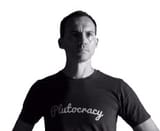Interview: Baden Pailthorpe
Baden Pailthorpe (b. 1984, Canberra, Australia) is a contemporary artist. Situated predominantly within the field of new media, Pailthorpe’s work increasingly exposes the growing reach and the subtle operations of contemporary militarism, institutions and power. He has participated in over sixty solo and group exhibitions, including the Centre Pompidou, Paris, NIMk, Amsterdam, la Gaîté Lyrique, Paris, the Palais de Tokyo, Paris, ARTSPACE, Sydney, the UQ Art Museum, Brisbane and the Australian War Memorial, Canberra. In 2013, Pailthorpe was the inaugural Australia Council artist in residence at the Australian War Memorial. He received a Ph.D in New Media Aesthetics from UNSW, Sydney, holds an MFA in New Media from l’Université Paris VIII; an MA from the College of Fine Arts, UNSW and a BA from the University of Sydney. His work is held in numerous private and public collections. He lives and works in Sydney, Australia.
This interview was produced by the students of Master's Degree Program in Arts, Markets and Cultural Heritage at IULM (Milan) as part of
GVA: Can you briefly describe your education?
Baden Pailthorpe: I started studying languages and culture before moving into art and new media at post graduate level. I didn't set out to be an artist at all; it slowly happened over time.
GVA: Can you name some influences - not necessarily artistic ones - that played a key role in your evolution as an artist?
Baden Pailthorpe: I've always looked up to artists like John Gerrard, Hito Steyerl, Trevor Paglen, AES+F, Omer Fast, to name just a few, since their practices each have a rigorous research component but also excellent execution. Apart from that, my most direct influences are those closest to me, my wife and my close friends, curators and writers, my academic colleagues and mentors. And finally, my exposure to mainstream western culture and media, cinema, video games, music videos etc, has been very influential.
GVA: When and why did you begin using video games in your practice?
Baden Pailthorpe: I began using video games in my practice because they were around me at the time. I was interested in them from an artistic point of view but it was also a question of what resources I had access to. When I was studying for a Masters in Photography, I was struck by the common thread between photographic theories and the photorealism that some video games aspire to. So it felt natural to apply these theories to video games and to use the game environment as a space for creation.
GVA: Why did you specifically choose a video game to make art? What do you find especially fascinating about this medium? Its interactivity? Agency? Aesthetics? Theatricality?
Baden Pailthorpe: I was mostly drawn to the very loaded politics of military games, especially first-person shooters. I spent many hours playing these games as a teenager, but as a student at University I began to understand the mechanics of the game in more complex terms. By treating the game as a sort of ready-made, in the Duchampian sense, a whole world of possibilities was opened up to critique the political and cultural assumptions that are bound up within the very carefully constructed world of video games.
GVA: The creative opportunities afforded by machinima are greatly constrained by existing copyright law, which prohibits many possible uses, including commercial purposes. What’s your take on the paradoxical nature of this artform?
Baden Pailthorpe: Machinima is an interesting practice since many game studios now actively encourage this practice for marketing purposes. So it is paradoxical indeed, but it now seems like games studios have identified the commercial benefits of using free labor from their users. I have not made any work in video games since 2013 now, but it still seems to be a rapidly evolving area that existing law struggles to keep up with.
GVA: Would you agree that machinima has democratized the art making process? Has it lowered the entry barrier for creators of video art, as some critics argue?
Baden Pailthorpe: I think video has been democratized for some time, and photography for even longer. And this idea has been around since Walter Benjamin, of course. But the barriers to art making are probably more complex than access the tools themselves. More broadly, the production of 'content' is now the dominant practice. Art still seems to be able to demarcate a special space for video art/machinima etc but the complex barriers within the art world remain.
GVA: Can you describe your creative process? What kind of video games did you use to create the Cadence series? What is the relationship between Cadence and its predecessor, Formation?
Baden Pailthorpe: Cadence was made by using a military simulator which has a very flexible editor. So it is more like a piece of production software than a video game. I like using tools in ways that were not intended, to push things to their limits so that new possibilities are revealed. The patterns in Cadence exist in the game but they are invisible unless organised in a specific way. By intervening in the logic of the game and reorganizing its usual operations, magical hidden elements can be revealed. This links back to the artists I mentioned earlier, they all make visible the invisible in some way. They reveal otherwise hidden or obscured relationships that give us a deeper insight into the forces that shape our cultures and politics.
:
Baden Pailthorpe